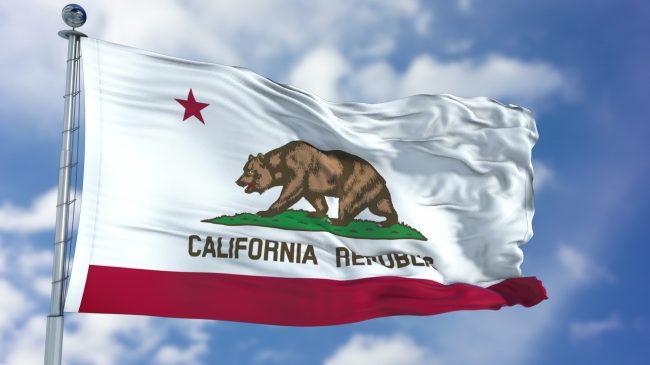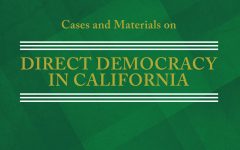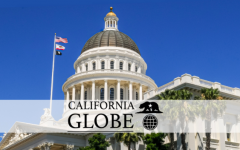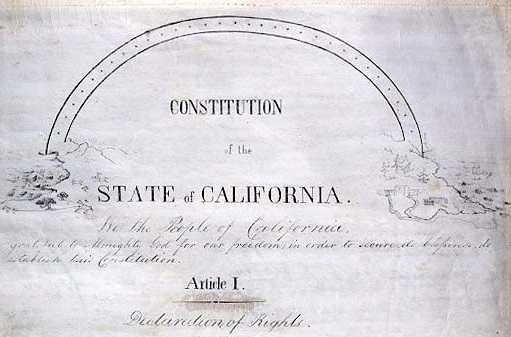
California Bear Flag. (Photo: ca.gov)
The Globe Quiz on California Direct Democracy
The Legislature may amend or repeal an initiative statute by another statute
By Chris Micheli, April 15, 2023 7:16 am
This quiz is to test your knowledge about California’s forms of direct democracy.
True or False?
- The three forms of direct democracy are initiative, referendum, and recall.
- An initiative in California can enact changes to statutes or the state Constitution.
- A referendum must collect the required number of signatures within 120 days of a statute’s enactment.
- The state Constitution defines residence and registration requirements for purposes of voting in this state.
- Four types of measures are not subject to the referendum process.
- The initiative and referendum apply to California cities and counties.
- Proponents of a recall and a referendum have 90 days to collect signatures for qualification.
- The Legislature provides for the recall of local officers in all instances.
- If a recall is unsuccessful, another recall may not be initiated against the public officer until one year after the recall election.
- A recall of a state officer is initiated by delivering to the Secretary of State a petition alleging a reason for the recall.
- The reason for a recall cannot be reviewed by anyone.
- The initiative process allows the statewide voters to adopt only additions, amendments, or repeals of the California Constitution.
- Although the recall power is granted to the people, the Legislature can enact statutes regarding circulation, filing, and certification of petitions, as well as the recall election.
- A successful recall requires just a majority vote on the recall question, and a plurality vote for the successor candidate to be elected.
- A recall petition for a statewide officer requires 12% signature threshold, while a recall petition for a state legislator requires 15%.
- An initiative must comply with the single subject rule, just like a statute by the Legislature.
- The Governor cannot call a special election once an initiative qualifies for the ballot because the initiative can only be considered on the general election ballot.
- A constitutional amendment initiative requires signatures from 5% of the electors from the last gubernatorial election.
- The Governor cannot call a special election once a referendum qualifies for the ballot because the referendum can only be considered on the general election ballot.
- An initiative or a referendum takes effect five days after the election at which the voters approved the measure.
- The Attorney General prepares a title and summary of either an initiative or a referendum.
- The Legislature may amend or repeal an initiative statute by another statute.
How did you do? The following are the answers:
- True – these three forms are set forth in Article II of the California Constitution.
- True – the people’s initiative power can be used to add, amend, or repeal state statutes and the state Constitution.
- False – the signatures must be collected within 90 days of the enactment of the statute.
- False – section 3 of the state Constitution grants that authority to the Legislature.
- True – section 9(a) provides that the following are exempt from the referendum: urgency statutes, statutes calling elections, and statutes providing for tax levies or appropriations for usual current expenses of the State.
- True – as set forth in the state Constitution
- False – proponents of a recall have 160 days to file signed petitions.
- False – this section does not affect counties and cities whose charters provide for recall.
- False – the time period that must elapse is six months.
- True – the petition officially begins the process.
- True – the sufficiency of the reason for the recall is not reviewable even by a court.
- False – the initiative can propose statutes and amendments to the Constitution.
- True – this power is granted to the Legislature by the state Constitution.
- True – those are the two vote thresholds required.
- False – the threshold for a state legislator is 20%.
- True – the single subject rule applies to both initiatives and bills.
- False – the Governor may call a special statewide election for an initiative once it has qualified for the ballot.
- False – a statutory initiative only requires 5% of the voters to sign the petition, while a constitutional initiative requires an 8% threshold.
- False – the Governor may call a special statewide election for a referendum once it has qualified for the ballot.
- False – an initiative statute or referendum approved by a majority of votes cast takes effect on the fifth day after the Secretary of State files the statement of the vote for the election at which the measure is voted on.
- True – before circulation of an initiative or referendum petition for signatures, a copy must be submitted to the Attorney General who then prepares a title and summary of the measure.
- False – the Legislature may amend or repeal an initiative statute by another statute that becomes effective only when approved by the electors, unless the initiative statute permits amendment or repeal without the electors’ approval.
Latest posts by Chris Micheli (see all)
- Frequently Asked Questions about When Elected Officials Take Office - April 25, 2024
- Frequently Asked Questions About Ethics Training for Local Agencies - April 24, 2024
- Frequently Asked Questions about Privileges of Voters in California - April 23, 2024





Doesn’t Newsom (aka Hair gel Hilter) and Democrats dictate what is “democracy?” Isn’t Democracy the oppressive agenda that they impose on Californians while pretending that Californians asked for it?